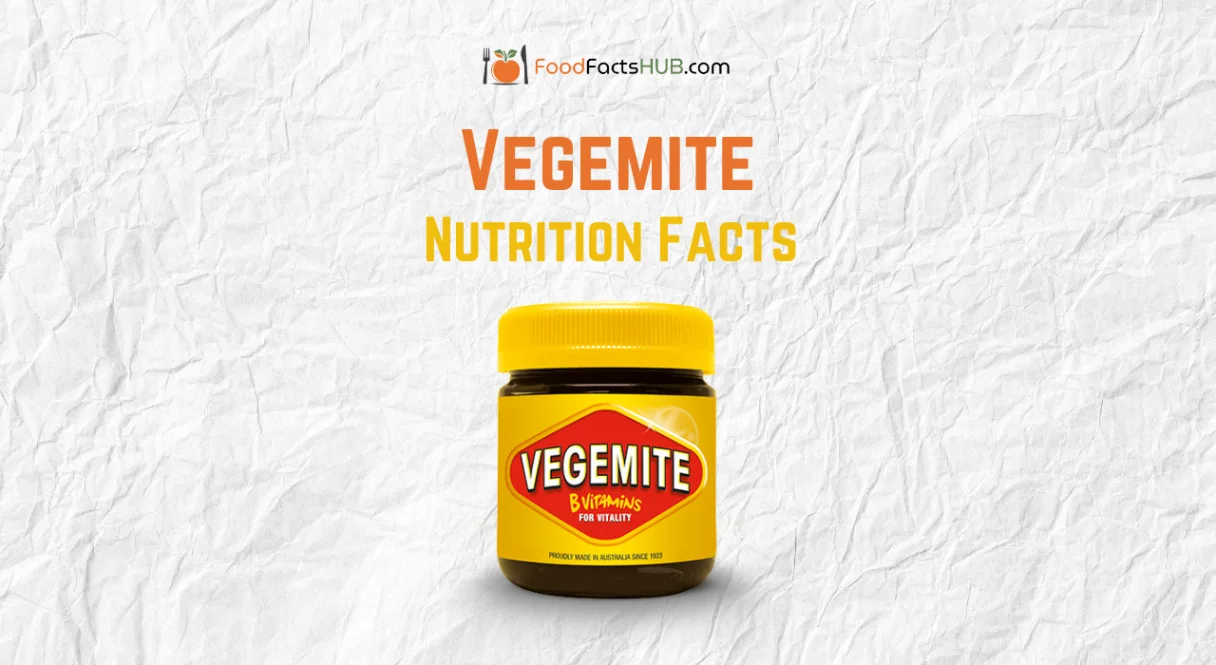The pictures in our articles might not always show exactly what the text is talking about. We use these images to make the article more interesting and eye-catching. They are there to add to the text, but not to replace it or show every detail.
Introduction to Vegemite: Australia’s Nutritional Powerhouse
Vegemite, the iconic Australian spread, has been a staple in Aussie households for nearly a century. This dark, savory paste made from brewer's yeast extract has captured the hearts and taste buds of millions worldwide. But beyond its unique flavor profile lies a treasure trove of nutritional benefits that make Vegemite more than just a spread – it's a nutritional powerhouse.
In this comprehensive guide, we'll delve deep into the world of Vegemite nutrition facts, exploring its rich history, impressive nutritional profile, and the myriad health benefits it offers. Whether you're a long-time Vegemite enthusiast or a curious newcomer, this article will provide you with everything you need to know about this beloved Australian spread. From its vitamin-rich composition to its role in supporting overall health, we'll uncover why Vegemite has earned its place as a nutritional icon Down Under and beyond.
The Origins of Vegemite: A Brief History
Before we dive into the nutritional aspects, let's take a moment to appreciate the origins of this unique spread:
Vegemite was born out of innovation and necessity, quickly becoming a cultural phenomenon in Australia. Its popularity soared during World War II when it was included in soldiers' rations, cementing its place in Australian culinary history.
Vegemite Nutrition Facts: A Detailed Breakdown
Understanding the nutritional profile of Vegemite is key to appreciating its health benefits. Let's break down the Vegemite nutrition facts per 5g serving (approximately one teaspoon):
| Nutrient | Amount | % Daily Value |
|---|---|---|
| Calories | 9 | - |
| Protein | 1.3g | 3% |
| Fat | 0g | 0% |
| Carbohydrates | 0g | 0% |
| Fiber | 0g | 0% |
| Sugar | 0g | 0% |
| Sodium | 165mg | 7% |
Vitamin and Mineral Content
Vegemite is particularly renowned for its rich vitamin B content:
Additionally, Vegemite contains trace amounts of several essential minerals:
Each of these minerals contributes approximately 0.4% of the daily recommended value per serving.
The Health Benefits of Vegemite: More Than Just a Spread
1. Rich Source of B Vitamins
Vegemite's high B vitamin content offers numerous health benefits:
2. Folate for Pregnancy and Beyond
The high folate content in Vegemite makes it particularly beneficial for:
3. Cholesterol Management
The niacin in Vegemite may help:
4. Low in Calories and Fat
For those watching their calorie intake, Vegemite offers:
5. Antioxidant Properties
The fermentation process used to create Vegemite results in:
Potential Risks and Considerations
While Vegemite offers numerous health benefits, it's important to consider:
Vegemite in Your Diet: Creative Ways to Enjoy
Vegemite isn't just for spreading on toast. Here are some innovative ways to incorporate it into your diet:
Vegemite vs. Other Spreads: A Nutritional Comparison
To truly appreciate Vegemite's nutritional profile, let's compare it to other popular spreads:
| Spread (per 100g) | Calories | Protein | Fat | Sodium |
|---|---|---|---|---|
| Vegemite | 180 | 26g | 0g | 3300mg |
| Peanut Butter | 588 | 25g | 50g | 430mg |
| Nutella | 539 | 6g | 31g | 37mg |
| Jam | 250 | 0.5g | 0g | 10mg |
As we can see, Vegemite stands out for its high protein content and low fat, though it's important to note its higher sodium levels.
The Cultural Significance of Vegemite
Vegemite isn't just a food; it's a cultural icon in Australia:
This cultural significance adds an intangible value to the Vegemite experience, making it more than just a nutritional choice but a taste of Australian heritage.
Frequently Asked Questions About Vegemite Nutrition
Is Vegemite vegan?
Yes, Vegemite is vegan-friendly, containing no animal-derived ingredients.
How long does Vegemite last?
Unopened, Vegemite can last for years. Once opened, it's best consumed within a few months for optimal flavor.
Can Vegemite be part of a weight loss diet?
Due to its low calorie and fat content, Vegemite can be included in a calorie-controlled diet when consumed in moderation.
Is there a low-sodium version of Vegemite available?
Currently, there isn't a low-sodium Vegemite variant, but consuming it in small amounts can help manage sodium intake.
How does Vegemite compare to Marmite nutritionally?
While similar, Vegemite generally has a higher concentration of B vitamins compared to its British counterpart, Marmite.
Conclusion: Embracing Vegemite as Part of a Healthy Diet
In conclusion, Vegemite nutrition facts reveal a spread that's more than just a cultural icon – it's a nutritional powerhouse. Rich in B vitamins, low in calories and fat, and packed with a unique umami flavor, Vegemite offers a range of health benefits when consumed as part of a balanced diet.
While its high sodium content means moderation is key, the versatility and nutritional profile of Vegemite make it a valuable addition to any kitchen. Whether you're spreading it on toast, using it to enhance savory dishes, or simply enjoying it as a taste of Australia, Vegemite continues to prove its worth as a nutritious and beloved spread.
As we've explored in this comprehensive guide, the Vegemite nutrition facts paint a picture of a food that's not only steeped in cultural significance but also offers tangible health benefits. From supporting brain function to potentially aiding in cholesterol management, Vegemite's nutritional offerings are as rich and complex as its distinctive flavor.






